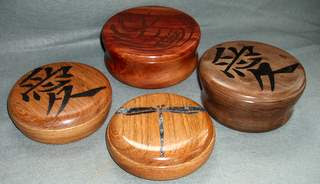It was a bargain that I couldn't pass up. I first decided not to buy it. Then I went to Cedar Lakes and spent three days using one just like it and fell in love with the power and sturdiness of this lathe. The final straw was my wife's suggestion that this could be my Christmas present from her. So, I recontacted the seller and negotiated a mutually agreeable price. We disassembled it, loaded it in my Explorer, drove it to my workshop, and reassembled it. Here I am standing next to 440 pounds of cast iron that Mary Lou and I moved from my car into my shop.
This is my new baby: a Jet #708359 JWL-1642EVS 16-Inch Swing 42-Inch between Centers 1-1/2 Horsepower Electronic Variable Speed Woodworking Lathe. I bought it from a small business that purchased it to make trophy bats and then discovered they could buy preturned blanks and reduce their costs. It was only used slightly and appears almost brand new. There are a couple of accessories that should have come with the lathe but did not. I will order those this coming week. The overall cost savings on the lathe is about 35%.
 Along with the lathe I bought the Vega duplicator that the seller had also purchased to make the trophy bats. It is used to follow a template or another turning to duplicate turnings. Here again I initially was not interested in the duplicator. Again, my wife intervened to suggest that I would probably regret not getting it. So, that came along as well. The duplicator is already set up to work with the Jet lathe that I bought. Although I don't intend to make trophy bats with it, making spindles, chair legs and Windsor chair spindles did come to mind. This cost me about 50% of the retail price listed on Amazon.
Along with the lathe I bought the Vega duplicator that the seller had also purchased to make the trophy bats. It is used to follow a template or another turning to duplicate turnings. Here again I initially was not interested in the duplicator. Again, my wife intervened to suggest that I would probably regret not getting it. So, that came along as well. The duplicator is already set up to work with the Jet lathe that I bought. Although I don't intend to make trophy bats with it, making spindles, chair legs and Windsor chair spindles did come to mind. This cost me about 50% of the retail price listed on Amazon. Finally, the listing for the lathe sale indicated that a tool set was included. It is a Steelex 6-Piece Deluxe HSS Lathe Chisel Set. I have never heard of the brand but I did see some listing on Amazon for the set and several other Steelex products. This particular item did not have any reviews but another Steelex chisel set was really downgraded as poor in quality. I don't need any of these tools but will at least give them a tryout. This set lists for just over $100 which would be about the cost for one good chisel so I know not to expect too much.
Finally, the listing for the lathe sale indicated that a tool set was included. It is a Steelex 6-Piece Deluxe HSS Lathe Chisel Set. I have never heard of the brand but I did see some listing on Amazon for the set and several other Steelex products. This particular item did not have any reviews but another Steelex chisel set was really downgraded as poor in quality. I don't need any of these tools but will at least give them a tryout. This set lists for just over $100 which would be about the cost for one good chisel so I know not to expect too much.I really don't want to end on any kind of negative comment. The lathe was a beautiful gift from my wife and a fantastic tool to help me improve my wooturning skills. This was a fantastic deal all told! Merry Christmas just a few weeks early.
























